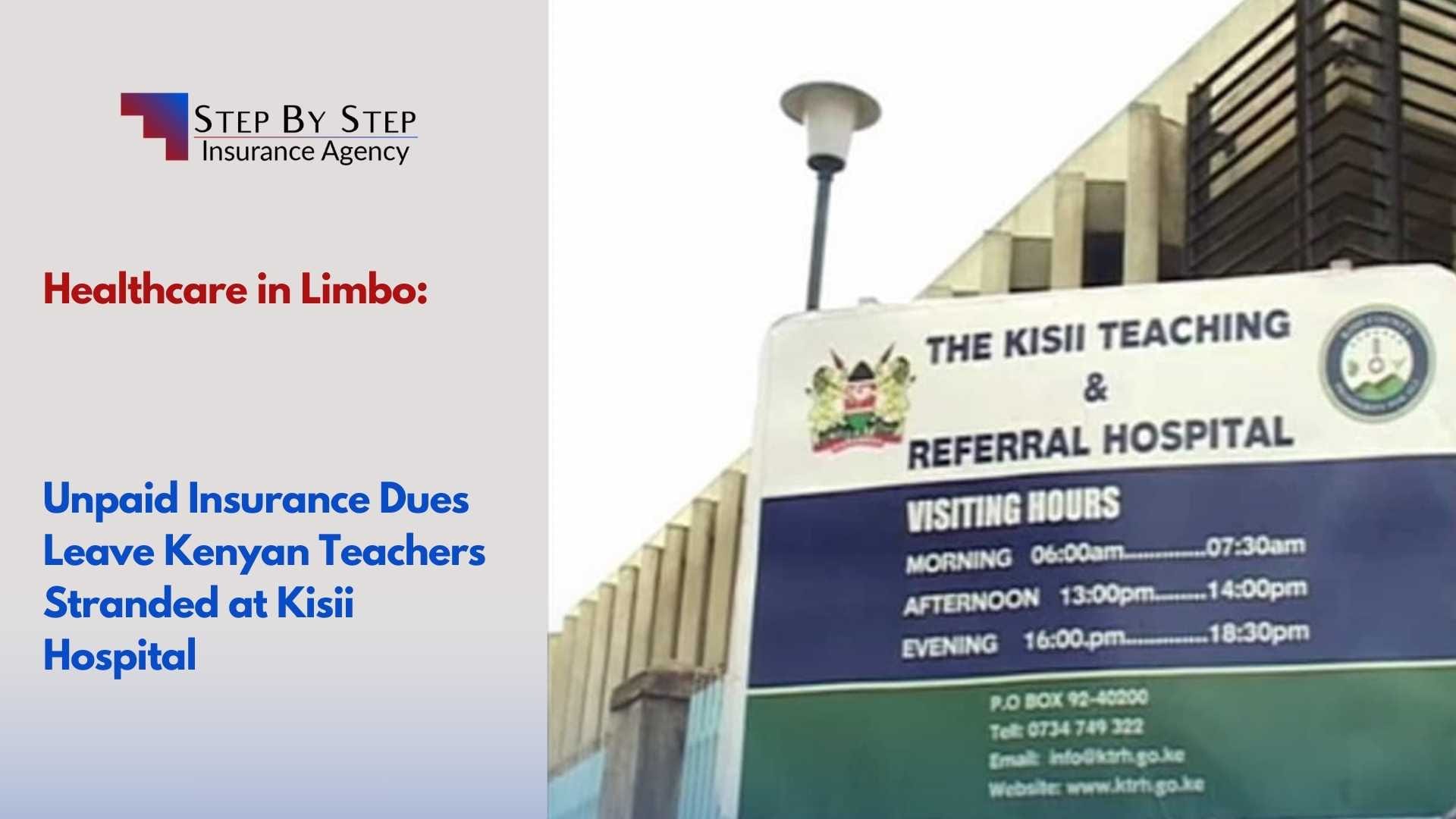Healthcare in Limbo: Unpaid Insurance Dues Leave Kenyan Teachers Stranded at Kisii Hospital
A healthcare crisis is unfolding in Kenya’s Kisii County, where hundreds of teachers have been denied medical services at the Kisii Teaching and Referral Hospital (KTRH) since January 27, 2025, due to unpaid insurance dues.
The stalemate, stemming from delayed payments by the Teachers Service Commission (TSC), highlights systemic failures in Kenya’s public finance management and raises urgent questions about the welfare of educators—a pillar of the nation’s development.
The Current Crisis: Unpaid Bills, Broken Promises
The KTRH suspended services for teachers after the TSC failed to remit funds for the renewed Minet Medical Cover, a two-year insurance scheme for educators. Despite the TSC’s contract renewal, delays in disbursements from the National Treasury left the hospital with pending bills, triggering a chain reaction:
Service Suspension: KTRH’s amenity wing, catering exclusively to teachers, halted operations, leading to drug shortages and staff redeployment.
Financial Gridlock: The Treasury cited “procedural delays,” leaving the TSC unable to pay Minet, which in turn withheld funds from the hospital.
By the Numbers:
15,000+ teachers in Kisii County rely on KTRH for care.
Estimated pending bills: KES 180 million ($1.4 million) as of February 2025.
Statement from KUPPET:
“Our members are suffering. Teachers are selling assets to afford private care. This negligence is unacceptable.”
— Akelo Misori, Secretary-General, Kenya Union of Post Primary Education Teachers (KUPPET)
Impact on Teachers: A Cycle of Desperation
The suspension has forced educators into dire choices:
Financial Strain: Many teachers, earning an average monthly salary of KES 34,000 ($265), now pay out-of-pocket for private clinics.
Mental Health Toll: Stress-related illnesses surge as educators juggle medical debt and classroom responsibilities.
Community Ripple Effects: Students face increased absenteeism as teachers prioritize health-seeking over lessons.
Voices from the Ground:
“I had surgery delayed for weeks. I borrowed money from a loan shark—how will I repay it?”
— Margaret Atieno, Primary School Teacher, Kisii
Broader Implications: A System in Peril
This crisis underscores deeper flaws in Kenya’s public sector healthcare financing:
Fragile Insurance Models: Over-reliance on third-party administrators like Minet creates bottlenecks.
Education-Healthcare Divide: Teachers, already burdened by large class sizes and unpaid salaries, bear the brunt of inter-ministerial inefficiencies.
Erosion of Trust: Repeated funding delays jeopardize Kenya’s Universal Health Coverage (UHC) ambitions.
Expert Insight:
“When a referral hospital turns away patients over debts, it’s a policy failure. This reflects poor prioritization of health in budget cycles.”
— Dr. Timothy Mwangi, Health Economist, University of Nairobi
Pathways to Resolution: Short-Term Fixes and Long-Term Reforms
Immediate Actions
Emergency Funds: Treasury to fast-track pending payments via a supplementary budget.
Public-Private Partnerships: Engage clinics like Gertrude’s Children’s Hospital to offer discounted care to teachers.
Structural Solutions
Dedicated Health Escrow Accounts: Ring-fence funds for teacher insurance to prevent Treasury delays.
Digital Payment Systems: Automate TSC-Treasury transactions to minimize bureaucratic lag.
Policy Overhaul: Amend the Public Finance Management Act to prioritize healthcare remittances.
Advocacy and Accountability
Parliamentary Oversight: The National Assembly’s Health Committee must summon TSC and Treasury officials.
Grassroots Campaigns: Unions like KUPPET to mobilize teacher protests, echoing 2022 doctors’ strikes for systemic change.
A Call for Solidarity: Teachers as a Litmus Test
Kenya’s treatment of its teachers—a workforce shaping future generations—reveals its commitment to social equity. The KTRH debacle mirrors past crises, such as MPs’ contentious push for post-retirement medical perks, highlighting a pattern of inequitable resource allocation.
The Way Forward:
Integrate Teacher Welfare into UHC: Expand the Social Health Insurance Fund (SHIF) to cover educators comprehensively.
National Dialogue: Host town halls with teachers, insurers, and policymakers to co-design sustainable solutions.
Leverage Global Models: Adopt Rwanda’s Mutuelle de Santé system, where community-based insurance ensures no citizen is left behind.
Conclusion: Health Dignity for Educators, Justice for Kenya
The suspension of services at Kisii Hospital is more than a fiscal oversight—it’s a moral failing. Kenya cannot champion education reform while neglecting those who drive it. By resolving this crisis transparently and reforming systems proactively, the nation can honor its teachers and set a precedent for equitable healthcare.
As KUPPET negotiates with the TSC and Treasury, Kenyans await a lesson in accountability: Will the state prioritize its educators, or let the chalkdust settle on another broken promise?


